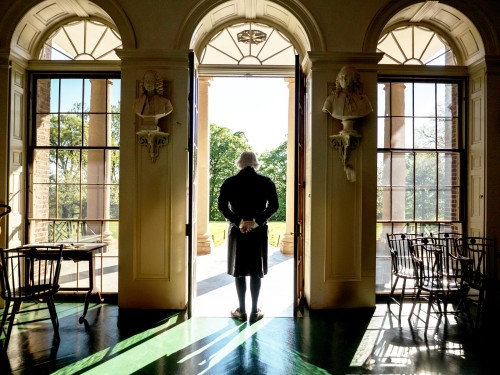
Archaeologists begin to use Thomas Jefferson’s 1796 Mutual Assurance Plat, an insurance document detailing all of the storehouses, workshops, and dwellings on Mulberry Row, as a guide to understanding slavery at Monticello. Using this plat, Harvard graduate student Oriel Pi-Sunyer uses a trenching technique to conduct archaeological excavations along the western half of Mulberry Row. Pi-Sunyer locates three buried structures – the “blacksmith and nailer’s shop” (building D), an “addition” to the nailery (building j), and a “store house for nailrod and other iron” (building l). He also excavates the remains of the “joiner’s shop” (building C).







